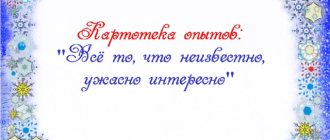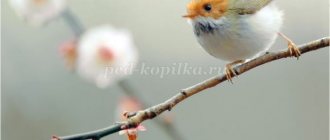Goal: To introduce children to China, its people and nature.
Evolutionary tasks:
Learning Objectives:
Training assignments:
|
Means of education and training:
visual (illustrations, use of maps, cards); multimedia (showing a presentation accompanied by the sounds of a train, video “From the Train Window”); literary (reading riddles, a poem about a panda); musical (Chinese melody).
| Sequencing | Methods | Contents of teacher activities | Entertainment for children | Planned result |
| Selecting a Destination | Conversation, stimulation with fun content, demonstration | Guys, yesterday I helped grandma clean out the closet and see what interesting hat she found. (Showing an Asian hat) Does anyone know what this is? My grandmother told me that this hat is worn in China, where people work in the rice fields. Who knows where China is? Let's look at the globe. How far is this country and would you like to visit it? Are we going on a trip? Guys, what city is the capital of our Motherland? And in China it is Beijing. Maybe we should go there? | Children express hypotheses and participate in conversation. Express your opinion about upcoming events. | Children's readiness for joint activities. |
| Select a car | Situation of free choice | Look at the globe, what can we bring to Beijing? Are there seas or large rivers that we can travel along? Or maybe fly or take a bus? I think traveling by train is also possible, and it will be quite affordable. | Children offer their ideas on choosing transport. | Show independence in your choice and initiative. |
| Determining the route, plotting it on a map (globe) | Exercise, explanation | We trace our route on the map. Where are we? In what city? Find it on the map. Wherever you go, it's all about Beijing. Also find it on the map. We outline our path with a red marker. | Departure and arrival points can be found and marked on the map. | Show cognitive processes: thinking, attention. |
| Make assumptions about what and who you might encounter along the way; What do children know about the destination? | Conversation. | Before you go on a trip, think about what we can see on the street, who we can meet? Do you know anything about China? Compared to our country, do you think it is warmer or colder? | Children organize a “train” with the help of a teacher. They make hypotheses. | Show cognitive processes: thinking, imagination, memory. |
| Travel. Fill the map area (globe) with intersecting contour lines, crop marks | Game situation, illustration, exercise, story, artistic expression, psycho-gymnastics, exercise. | It's time for us to go on a journey. The train departure signal sounds and the children watch the video “From the Train Window.” We've been traveling around China for a long time and now we're finally there. We arrived at Beijing's main station. We walked up the stairs to the waiting room and out onto the city street. (Shows images on a slide) But look who's meeting us! This is Lee. And pay attention to her headdress, who remembered her name? Lee invites us to go to the rice fields. What do you think they do with them? Lee wants to lead us along a mysterious path. To overcome it, you need to perform the movements correctly. (holds physical for a minute) And here we are in Yunnan province. Mostly there are mountains. Therefore, the Chinese had to invent such multi-level rice fields (slideshow). Everything is done so that moisture is retained and the fertile layer of soil is not eroded. Guys, Lee invites us to guess the riddle: this bear is black and white. He is trusting and kind. However, it is very rare to see Mishka with a nickname... Does anyone know the answer? Lee suggests we go to the zoo and find out what kind of bear it is. And here we are at the Beijing Zoo (animal show). It was discovered a long time ago, more than a thousand years ago. And during its existence, a huge number of animals and birds were collected here. The most important areas of the zoo: The Giant Panda House, Monkey Mountain, Medvedev Mountain, Lion and Tiger Hill and others. In the two-story amphibian and reptile enclosure, visitors can see the inhabitants of the Yangtze River: alligators, turtles, snakes and pythons. The panda has become the national symbol of China. Let's take a look. It is also called bamboo bear, why do you think? Bamboo is a very tall and durable grass. There are very few pandas left on the planet; they are listed in the Red Book. Do you remember what book this is? Therefore, reserves are created for pandas. Who did we meet at the zoo? Let's draw these animals. (Game “Come on, show” a panda, a lion, a monkey, etc.) Well done, now let’s get on the train and return to Russia! | "They're on the train." They watch the video, look at the illustrations. They get up from their chairs and approach the easel. Exercises: Clap your hands under the raised knee; separate file; hands to the side. Look at the illustrations. | They have an understanding of the nature and animals of China. They can solve puzzles. They know the peculiarities of Chinese work. |
| Summing up, testing hypotheses, what new things have been learned | Conversation, generalization. | Guys, what country have we visited now? What you see? Did you learn anything new? Is China similar to our country? (Children, remembering what they have learned, use the map as a hint) | Express your opinion about the activities carried out. Join the conversation. | I can express my opinion. They say complete answers. |
| Openness-orientation towards the autonomous activities of children under regime conditions and in the family | Conversation. | Did you enjoy our trip? Don't forget to tell your parents where we were today. Now, if you wish, you can draw a panda. | Listen to the teacher. | Cognitive processes: attention, memory. |
What else to read: Master class “Making attributes for the role-playing game “Shop” and “Cafe”. Project on design, manual labor (middle group)



